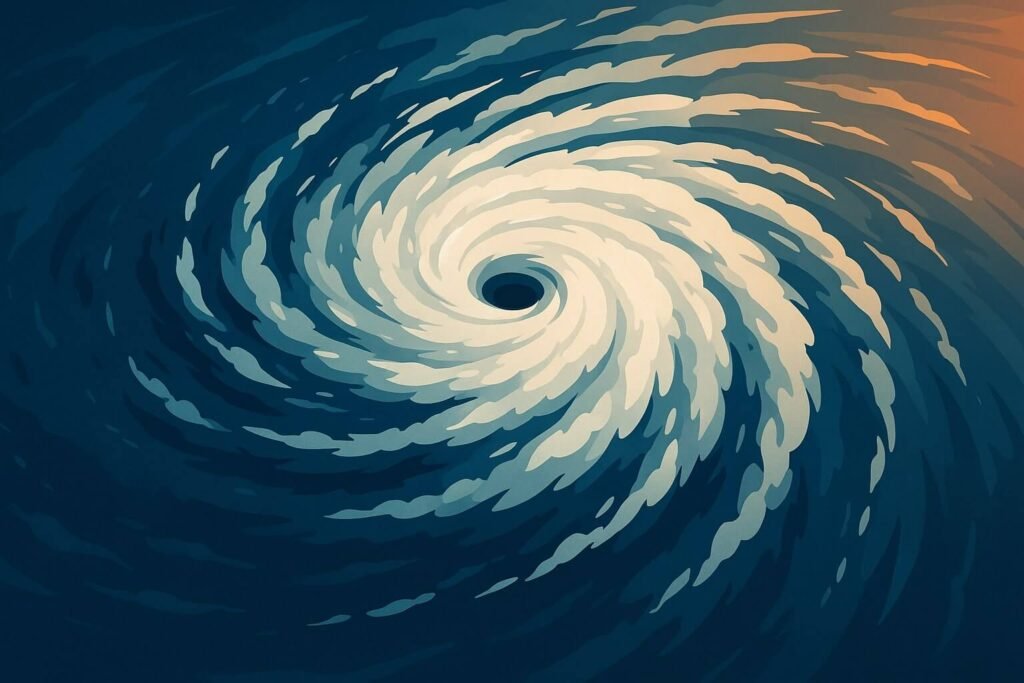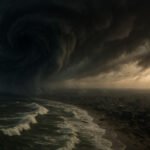ropical cyclones don’t mess around. They’re the atmosphere’s way of unleashing serious energy — from mind-bending winds to monster-sized storm swirls that can cover half a continent. But a few storms in history stand above the rest. These aren’t just strong storms — they’re record-breakers.
Here’s a look at five of the biggest cyclones ever recorded. We’re talking about wind speeds that tear through steel, pressure so low it makes your ears pop just looking at the chart, and enough rain and storm surge to wipe whole coastlines clean.
1. Hurricane Patricia (2015) – Fastest Wind Ever Recorded
Patricia wasn’t even on the radar, and then—boom. Within 24 hours, it went from “meh” to the strongest hurricane ever recorded in the western hemisphere. With sustained winds of 215 mph (that’s 345 km/h!) and a pressure low of 872 hPa, Patricia was basically the jet engine of cyclones.
It slammed into Mexico but weakened just before landfall, which is honestly the only reason it didn’t become one of the deadliest too.
Fast Fact: Patricia intensified faster than any other storm on record. Meteorologists were just staring at their models going what the heck is this.
2. Typhoon Tip (1979) – The Biggest Cyclone Ever by Size
You want size? Tip had size. This typhoon stretched 2,220 km across, almost the entire width of the United States. It also holds the global record for lowest sea-level pressure ever measured in a tropical cyclone: 870 hPa.
Tip wasn’t just big — it was a slow, churning beast over the Pacific. It brushed Japan, flooded cities, and left behind a trail of landslides and chaos.
Why it matters: Big cyclones like Tip show how even moderate windstorms can do huge damage just from their size and duration.
3. Super Typhoon Haiyan (2013) – The Most Violent Landfall
Haiyan didn’t just break records — it broke hearts. It smashed into the Philippines with 195 mph winds, one of the most powerful landfalls ever. Whole villages were just… gone. Over 6,000 people died, and the storm surge rose as high as 20 feet in places.
It became one of the most devastating natural disasters in Philippine history, and it’s still talked about in disaster training manuals all over the world.
Heads up: The science still argues over whether Haiyan or Tip was stronger. But at landfall? Haiyan probably wins that fight.
4. Cyclone Winston (2016) – Southern Hemisphere’s Biggest Hit
The South Pacific isn’t always in the spotlight, but Winston made sure we all paid attention. This beast slammed into Fiji with sustained winds of 180 mph and a minimum pressure of 884 hPa — both records for the Southern Hemisphere.
Whole towns were flattened. Infrastructure took years to rebuild. And it cost Fiji about $1.4 billion, a huge blow to their economy.
Something to think about: Strong cyclones aren’t just a “northern” problem anymore. Winston changed how island nations prepare — and how global forecasters track storms down south.
5. Cyclone Freddy (2023) – The Storm That Wouldn’t Quit
Forget short bursts. Freddy was a marathon cyclone. It stuck around for 36 days, travelled over 12,000 km, and hit Madagascar, Mozambique, and Malawi with repeated blows.
It wasn’t the strongest cyclone ever, but Freddy broke records for storm duration and energy output (measured as ACE). Over 1,400 lives were lost, and entire regions were left dealing with food shortages and flooding.
Lesson learned: Just because a cyclone’s not the fastest or strongest doesn’t mean it can’t cause serious destruction.
What These 5 Cyclones Teach Us
- Cyclones are getting stronger, faster, and more unpredictable.
- Size matters — a huge storm, even if not “the strongest,” can still be a monster.
- Rapid intensification is becoming more common — less warning time, more danger.
- The South Pacific and Indian Ocean aren’t safe zones anymore.
With oceans heating up and patterns shifting, storms like Patricia or Freddy might not be so rare in the future. That’s why we’re here — CycloneRadar tracks them, breaks ‘em down, and helps you stay ahead of the next big one.


